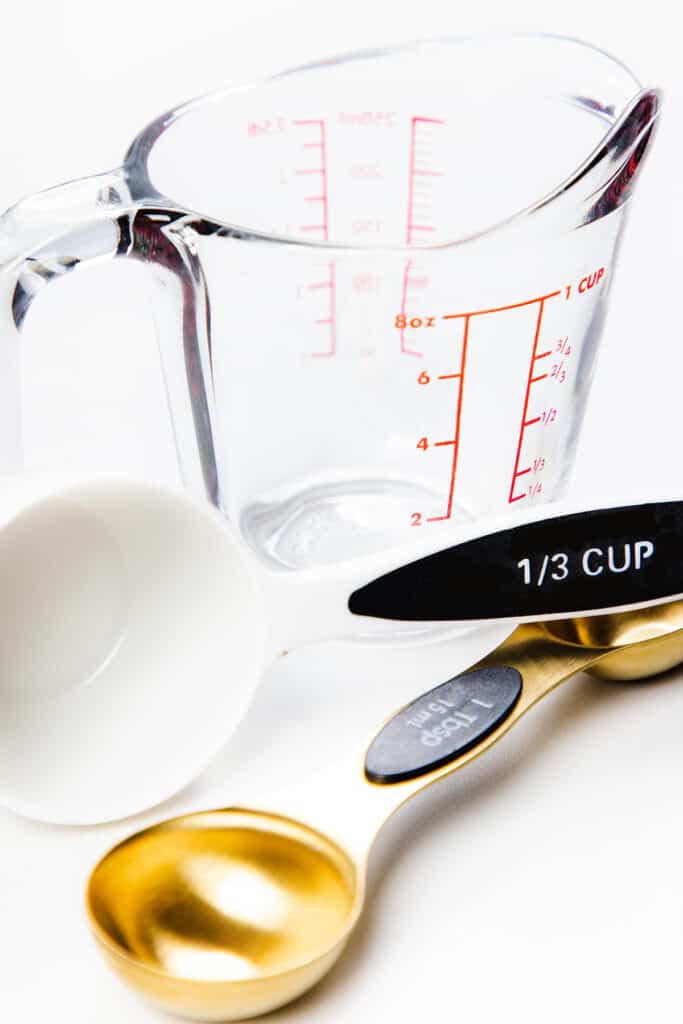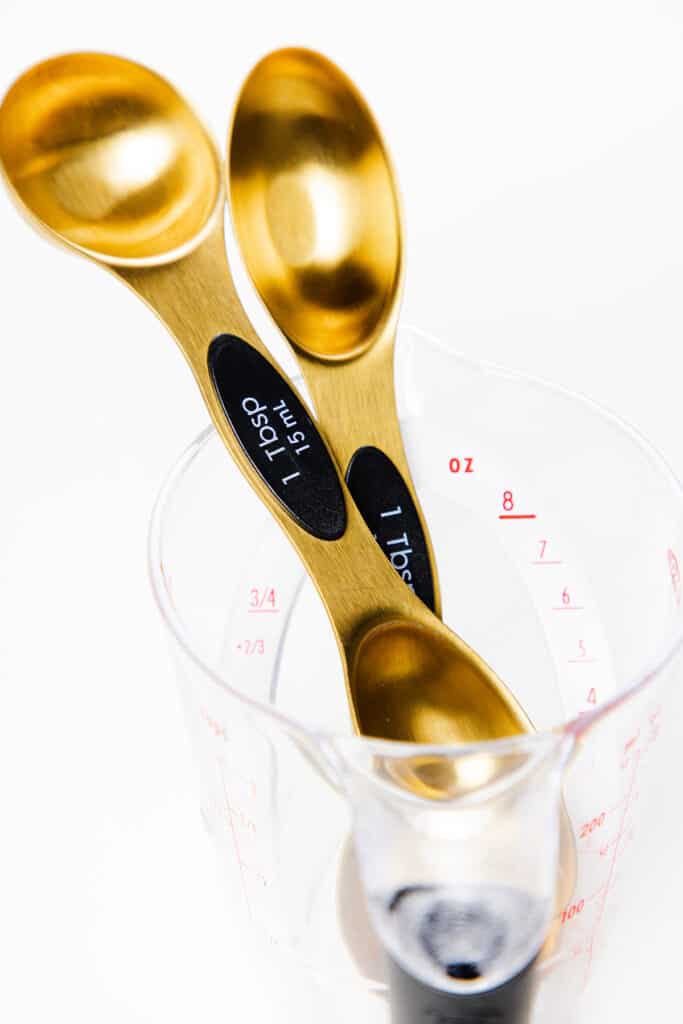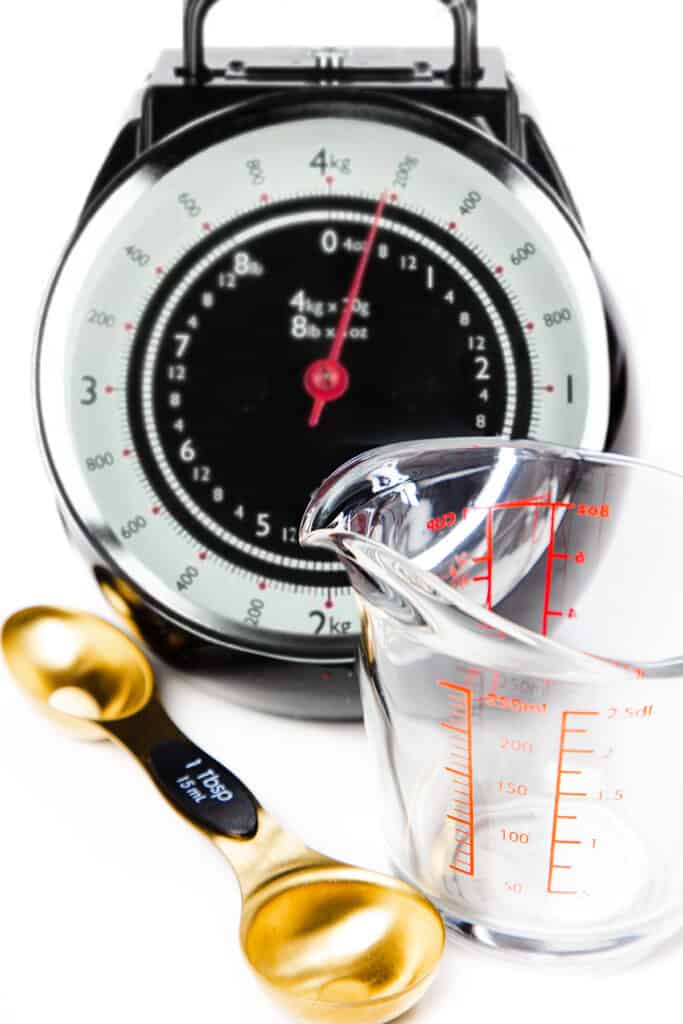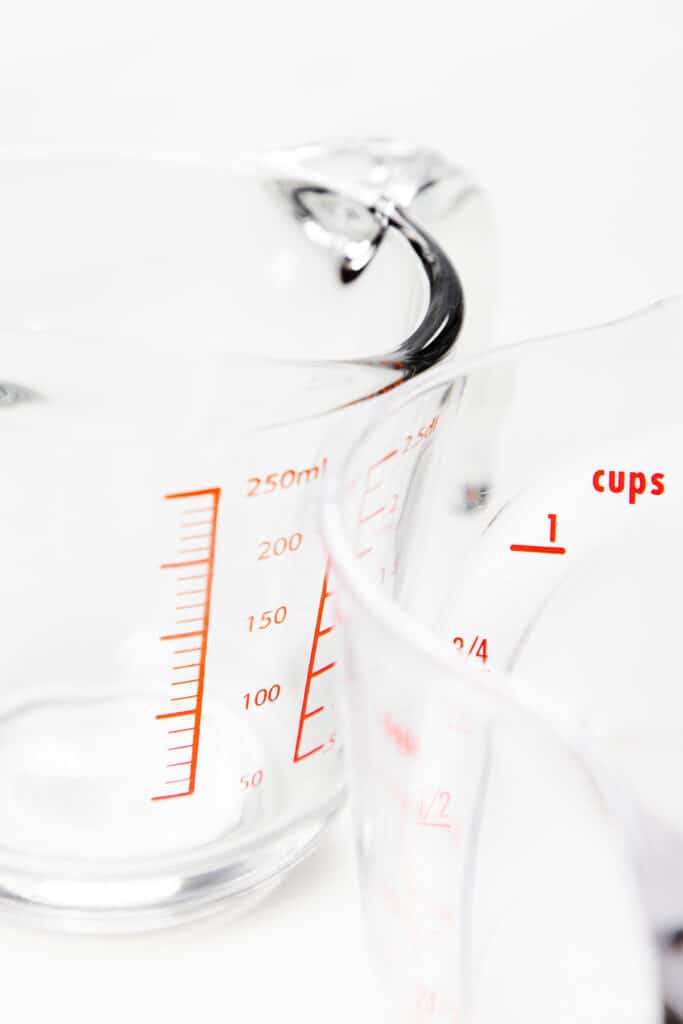Discover the number of tablespoons in a 1/3 cup, gain insights into handy culinary measurement conversions, and helpful tips.


How Many Tablespoons in ? Cup?
Whether you’re a seasoned foodie or a beginner in the kitchen, getting measurements, right can make all the difference. That’s why we’re here to break it down for you. So, what do you do when your recipe asks for a 1/3 cup, and all you’ve got are tablespoons? Not to worry, we’ve got your back!
The US Conversion Formula
If your recipe is asking for a US 1/3 cup, and you’ve got only tablespoons, here’s how you can figure it out:
There are 16 tablespoons in 1 cup. So, to find out how many tablespoons make up a 1/3 cup, just do a quick calculation:
1/3 x 16 = approximately 5.33.
So, in a nutshell, there are roughly 5.33 US tablespoons in a 1/3 cup.
Tablespoons Around the Globe
Although “tablespoon” might sound like a standard unit, it varies in volume from one country to another. These differences can have a big impact when you’re following international recipes.


We’ve compiled a handy conversion table to show you how ? US cup (roughly 78.86 milliliters) converts to tablespoons in different countries. Just bear in mind that these are rough estimates, and the actual volume of a tablespoon can vary slightly, even within the same country.
Equivalent Value of 1/3 US Cup in Tablespoons across Different Countries
| Country | Equivalent Value |
|---|---|
| United States, Canada | Around 5.33 tablespoons |
| United Kingdom, Australia | Roughly 4.44 tablespoons |
| New Zealand | About 4.44 tablespoons |
| Germany (European Union) | 5.33 tablespoons |
| France (European Union) | Around 6.22 to 6.4 tablespoons |
| Japan | 5.33 tablespoons |
| South Africa | 5.33 tablespoons |
| Sweden | 5.33 tablespoons |
| Russia | Around 5.6 tablespoons |
| Netherlands | 5.33 tablespoons |
Remember, while many countries use a standard of 15 milliliters per tablespoon, some use a larger or smaller volume. When following recipes from different places, it’s a good idea to double-check these measurements to make sure you’re on the right track.
Metric vs. Imperial Measurements
As a culinary adventurer, you’ll need to get to grips with different measurement systems. The two big ones are the Imperial system, mostly used in the United States, and the Metric system, the go-to for most other countries.


The Imperial system uses measurements like ounces, pounds, teaspoons, tablespoons, cups, pints, quarts, and gallons. The Metric system, on the other hand, measures in milliliters, liters, grams, and kilograms, which are based on multiples of ten and, in theory, easier to work with.
Switching between these two systems is crucial for nailing a recipe, especially if it comes from another part of the world.
1/3 US Cup in Imperial and Metric Units
Here’s a conversion table that gives the equivalent of 1/3 US cup in some common Metric and Imperial units:
| Measurement | Roughly Equal to ? US Cup |
|---|---|
| Milliliters (Metric) | About 78.86 mL |
| Liters (Metric) | Close to 0.07886 L |
| Fluid ounces (Imperial) | Around 2.67 fl oz |
| Pints (Imperial) | Somewhere near 0.1667 pt |
| Quarts (Imperial) | Just about 0.0833 qt |
| Gallons (Imperial) | Nearly 0.0208 gal |
| Teaspoons (Imperial) | Around 16 tsp |
| Tablespoons (Imperial) | Roughly 5.33 tbsp |
These conversions are rounded off for simplicity. For recipes that require exact measurements, it’s always a good idea to use a kitchen scale or accurate measuring tools.
Liquid Conversions


Liquid measurements can differ from one country to another. Here are some common equivalents used worldwide for a US 1/3 cup.
| Measurement | Equivalent to 1/3 US Cup |
|---|---|
| Milliliters (Metric) | Roughly 78.86 mL |
| Fluid ounces (US) | 2.67 fl oz |
| Teaspoons (US) | 16 tsp |
| Tablespoons (US) | Approximately 5.33 tbsp |
These conversions are based on US standards. It’s always best to use accurate measuring tools when following a recipe, especially one from a country with different measurement standards.
Our Top Measuring Tips
- Pre-Sift Dry Ingredients: To ensure an even texture, consider sifting dry ingredients like flour, sugar, or cocoa powder before measuring. This breaks up clumps and results in a better mix of your recipes.
- Pick the Right Measuring Cups: Not all measuring cups are made equal. For liquids, use a liquid measuring cup with a spout for accurate and mess-free measurements. For dry ingredients, use nested dry measuring cups. These are designed to be filled to the top and leveled off with a straight edge for precision.
- Embrace the Kitchen Scale: If you’re looking for accuracy, a kitchen scale is a must. Measuring ingredients by weight provides the most accurate measurements and ensures your recipes turn out perfect every time.
- Get to Know Ingredient Densities: Different ingredients weigh differently. For instance, a cup of flour weighs less than a cup of granulated sugar. Getting familiar with the densities of common ingredients can help you adjust your measurements for perfect results.
- Have a Conversion Chart on Hand: Keep a conversion chart or use a smartphone app to quickly switch between different units of measurement. This can help you avoid errors and save time when following recipes from different sources.
- Master the “Zero Out” Method: If you’re using a digital kitchen scale, always reset it to zero after placing an empty container on it, but before adding the ingredient. This lets you measure the ingredient accurately without including the weight of the container.
- Know Your Measuring Cups: Liquid and dry measuring cups are different. Liquid cups have a spout for easy pouring, while dry cups have a level rim for scraping off excess ingredients. Using the right cup for each ingredient ensures your measurements are spot on.
- Keep a Kitchen Diary: Experimenting with your recipes is part of the fun. Keep a record of any substitutions or adjustments you make, so you can refer back to them later. This helps you build up a collection of personalized recipes and techniques.

